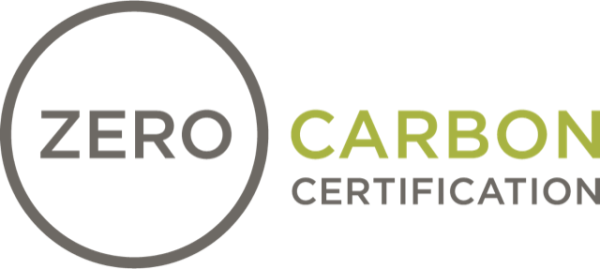EMBODIED CARBON – REDUCTION
The embodied carbon reduction must be shown via the change in total value of embodied carbon in the project, measured in carbon dioxide equivalent (CO₂e) and exported from the approved LCA tool that the project team elects to use.
Step 1 – Calculate the Baseline Embodied Carbon.
Collect embodied carbon data from an approved LCA tool in order to calculate the baseline, including embodied carbon values for all materials within the structure, foundation, and enclosure. The baseline embodied carbon value is the sum of these aggregated quantities. For projects with existing elements, the baseline must include embodied carbon estimates of the in-situ materials.
Step 2 – Calculate the Embodied Carbon of the Project.
Calculate the embodied carbon of the new design, repeating the process above, using the same methodology, but incorporating any low-carbon strategies that were implemented. This results in an embodied carbon value for the new design.
Step 3 – Calculate the Reduction in Embodied Carbon
Calculate the percent change from the value of embodied carbon of the baseline to that of the new design, ensuring a reduction of 20% or greater is achieved.
[(Baseline tCO₂e – Project tCO₂e )/ Baseline tCO₂e] x 100 = Percent Reduction
- tCO₂e Delta (baseline vs project) = Baseline tCO₂e – Project tCO₂e
- Percentage Change (decimal) = (Delta / Baseline tCO₂e)
- Percentage Change (shown as a percent) = Percentage Change x 100
Step 4 – Verify Compliance Determination.
A percent reduction equal to or larger than 0.2, or 20%, meets the 20% reduction requirement.
EXAMPLE CALCULATION
Step 1 – Calculate the Baseline Embodied Carbon
Assume the baseline building design includes:
- Steel superstructure: 340 metric tons CO₂e
- A concrete foundation with reinforcing steel elements: 270 metric tons CO₂e
- Enclosure materials: 150 metric tons CO₂e
This results in a total embodied carbon value of 760 metric tons CO₂e.
Step 2 – Calculate the Embodied Carbon of the Project.
After implementing low-embodied-carbon strategies, the project includes:
- Steel manufactured using renewable energy: 310 metric tons CO₂e
- Concrete mix with less cement per unit volume: 200 metric tons CO₂e
- Enclosure materials with reduced materials and some being locally sourced: 90 metric tons CO₂e
This results in a total embodied carbon value of 600 metric tons CO₂e.
Step 3 – Calculate the Reduction in Embodied Carbon
[(Baseline tCO₂e– Project tCO₂e) / Baseline tCO₂e] x 100 = Percent Reduction
- 760 tCO₂e – 600 tCO₂e = 160 tCO₂e
- 160 tCO₂e / 760 tCO₂e = 0.21 tCO₂e
- 0.21 tCO₂e * 100 = 21%
Step 4 – Verify Compliance
A reduction of 21% from the baseline building design meets the Imperative requirements.
SURPLUS RENEWABLE ENERGY CALCULATIONS
Note:
- PP kWh = Excess kWh during performance period.
- EPA Grid Factor = EPA factor (tCO₂e/kWh), taken from EPA eGRID Summary Table for project subregion (total output emission rate). Note: The values taken from the eGRID table need to be converted from lb/MWh to ton/kWh by dividing by 2×10⁶
- PP tCO₂e =
tCO₂e avoided due to excess generation during performance period.
Step 1 – Convert eGRID factor from lb/MWh to ton/kWh by dividing by a factor of 2×10⁶.
Step 2 – Multiply excess kWh fed back into the grid during the performance period by the EPA grid factor
for project subregion.
- (PP kWh) x (EPA grid factor) = (PP tCO₂e)
Step 3 – Multiply the tCO₂e avoided due to excess generation by 10 years.
- (PP tCO₂e) x 10 years = Total tCO₂e credit toward carbon offset
EXAMPLE CALCULATION
Assume a project in the Pacific Northwest producing 1000 kWh of surplus during its 12-month performance period.
Step 1 –
Convert eGRID factor from lb/MWh to ton/kWh by dividing by a factor of 2×10⁶.
- 635.5 lb CO₂e / (2×10⁶) = 0.0003177 tCO₂e/kWh
Step 2 – Multiply excess kWh fed back into the grid during the performance period by the EPA grid factor for project subregion.
- (1,000 kWh) x (0.0003177 tCO₂e/kWh) = 0.3177 tCO₂e
Step 3 – Multiply the tCO₂e avoided due to excess generation by 10 years.
- (0.3177 tCO₂e) x 10 years = 3.177 tCO₂e credit toward carbon offset



